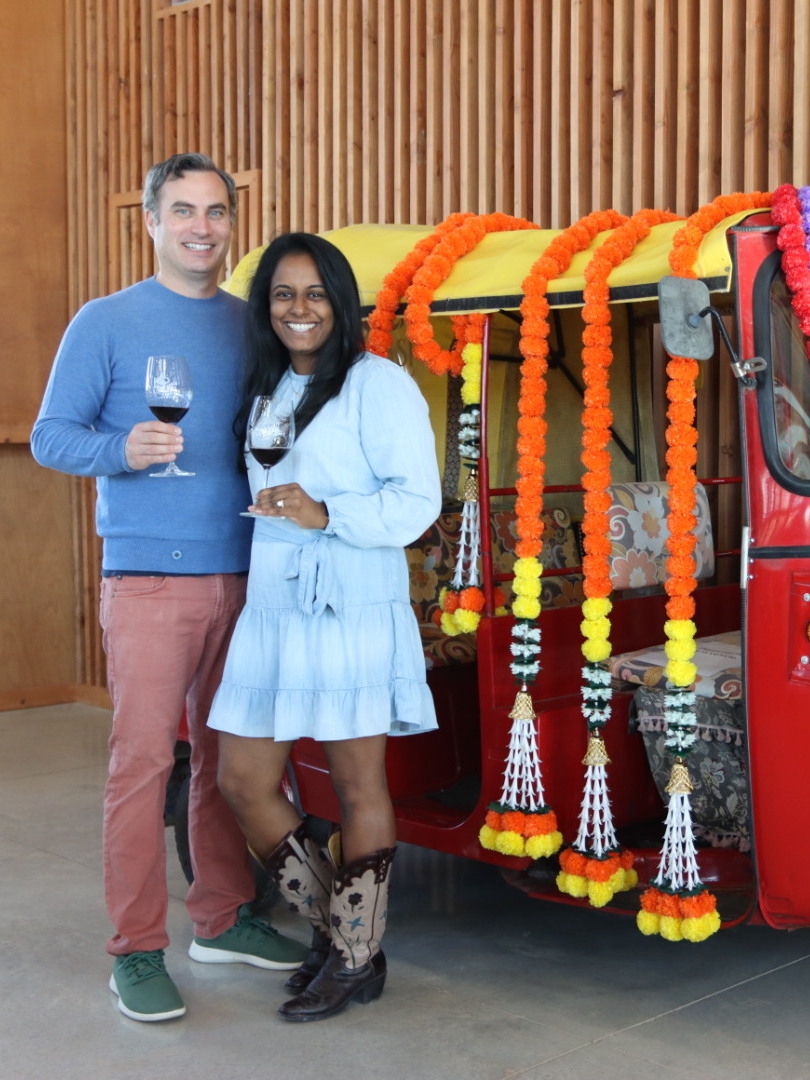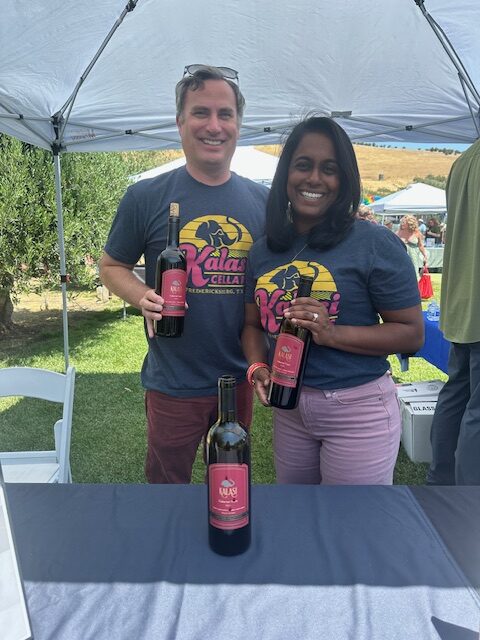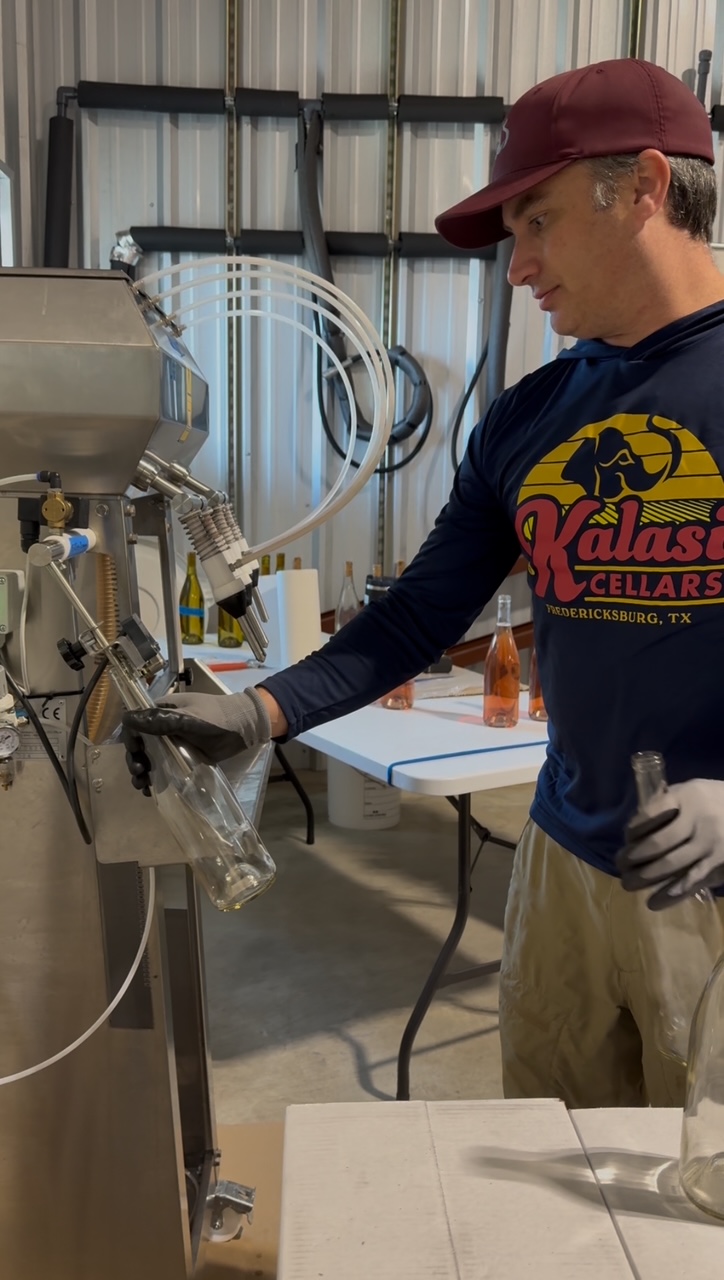June 4, 2021: What Does “A Heritage Reincarnated” Mean?
What Does “A Heritage Reincarnated” Mean?
Whether you are browsing our website, or enjoying wines in the tasting room, you may be a bit curious as to why we have two labels. One is red, the other is purple. What’s the difference? What’s the significance? Is one better than the other? Before we get into that, let me tell you a bit more about our story.
Historically both sides of Nikhila’s family farmed back in India. They grew crops of cocoa, turmeric, coconuts, and rice – all crops that are common in India. We’ve traced back at least five generations that have farmed, either on their own land, or working on someone else’s. In other words, the farming roots run deep. While her parents deviated from their farming roots, and Nikhila started out working in everything but farming, there was always a desire in her family to own a piece of land and start the family tradition back up. Now they knew that they wouldn’t be able to grow the same crops their ancestors had, but surely there was something they could all agree to farm.
As Nikhila’s family lived in Lubbock, they started racking their brains to pinpoint the perfect crop. Would it be pistachios? That sounded appealing, but then Nikhila was going to be uprooted and move to New Mexico. What about almonds? Similarly, Nikhila would be on the next flight to California. Ultimately they decided that whatever they were going to plant needed to be within 100 miles of their home in Lubbock. This was the best approach to having some sanity.
Once the search was narrowed down to a 100 mile radius around Lubbock, they really got to thinking. What about all these vineyards that have been popping up in the Texas High Plains? Well Nikhila loved wine, so that seemed possible. And the best place to grow grapes in the Texas High Plains is Terry County – just 40 minutes from their home in Lubbock. The stars were starting to align. The family could get back into farming, in something that Nikhila had an interest in, and maintain their sanity. So it was settled – they bought some land in 2013 and planted a vineyard in 2014.
Fast forward to 2015 and I (Greg) join the picture. Nikhila and I started dating and we quickly started talking about what would happen if we played a bigger role in the Texas wine industry. What if we did more than grow grapes, but also made some wine? What would that look like? Nikhila had the itch to make wine, knows how to grow some of the best fruit in the state of Texas, and her palate is fantastic, so it seemed like she was well suited to take the plunge. Me? Well, I definitely didn’t have her palate, but I knew how to operate a business very efficiently. After all, I was in management consulting so I was brought in specifically to help companies be more efficient.
So we decided we’re going to start a winery. We divided up responsibilities based on our strengths. Nikhila would be in charge of vines and wines, and I would be responsible for the rest (more or less). Now that we knew each other’s roles and our end goal, it was time to start working on filling in all the details.
Before Nikhila came into my life, I loved checking out all the breweries in Dallas, or in other cities I’d visit. One thing that makes beer fun and exciting is the constant release of new beers to try. Breweries are forced to rapidly try new things, in a way that we didn’t feel was as common in wineries. What if we took some of that approach and applied it to our winery?
We took a step back and started thinking. Nikhila’s family had been in farming for generations, and now we were back into farming. But it wasn’t the same farming her family had done. There was a significant twist – we were growing wine grapes. And now with the decision to start our own winery, we were taking things a step further. We were bringing a modern twist to the family’s heritage.
Note: If you want to read more about our quest to find land in Fredericksburg, read Our Search for The Perfect Tasting Room Location blog post.
After countless rounds of brainstorming, we said “A Heritage Reincarnated.” We were honoring her family’s farming heritage, but with a significant twist of growing wine grapes and making wine. Now how would that apply to the wine we were making? Could we incorporate some of the things we loved about other industries? Naturally we decided to have a Heritage line of wine, as well as a Reincarnated line. The Heritage line would consist of more common grape varietals, blends, and production styles. The Reincarnated line would give us some flexibility to have fun with what we were making. We could make wine from less common grape varietals, create less common blends, and play around with winemaking techniques. This would be our platform to show customers what was unique about our lineup of wines.
If you’ve visited our tasting room, you’ve probably experienced that we carry “A Heritage Reincarnated” out a bit further. Our tasting room looks a bit like a run-of-the-mill barn from the outside but, when you’re inside, you see that there is nothing run-of-the-mill about it. We have over 100 windows providing amazing natural light and gorgeous hill country views. Around all those windows is beautiful woodwork, framing each window’s perfect view. Dividing the main tasting room from the rest of the building we have a giant acoustic wall made up of enormous wood slats and speaker fabric to keep the room quiet even if there’s a crowd. Long story short, our tasting room is a twist on your typical barn, and provides customers a space unlike any other tasting room in the Texas Hill Country.
Lastly, if you’ve checked out our food menu, you’ve seen that we’ve incorporated Indian influences. Some are more traditional, like samosas, but some are fusions – like our tikka masala pizza. Look for more Indian-inspired food pairings in the future!
I hope that helps explain why we say we’re “A Heritage Reincarnated” and you can see how we’ve played with that motto throughout everything we do!


